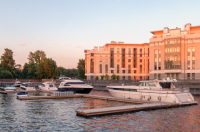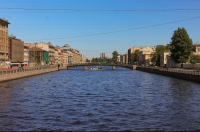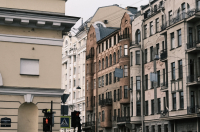Like other non-central historical districts, Narvskaya used to serve as the gateway to the city. In the 18th century, there was little more here than a checkpoint and a few villages, but by the early 20th century the area evolved into a thriving industrial hub. During the Soviet era, it layered up as an experimental residential area for workers of nearby factories. As a result, nowadays Narvskaya blends its industrial past with a tranquil atmosphere of low-rise buildings.
Looking around
It's best to start exploring Narvskaya from the underground hall of the eponymous metro station. As one of the first stations in St. Petersburg, it is decorated in the grand Neoclassical style with marble, red granite, and bronze accents. It originally featured a large mosaic of Stalin, later concealed behind a false wall. The pavilion itself is striking, with its irregular shapes and a prominent dome.
A must-see in the area is the green Narva Triumphal Arch, which was built to welcome soldiers as they returned after claiming victory over Napoleon in the Patriotic War of 1812. Initially made of wood, it was eventually rebuilt in stone. To make it even more France-centered, the arch was designed to mirror the Arc de Triomphe du Carrousel in Paris. After you’re done feasting your eyes on the exterior, keep in mind that you can also peek inside, where a branch of the city's Museum of Sculpture is located.
Embracing Constructivism
The grandeur of the arch is indeed striking, but it’s also worth focusing on what’s behind it – an abundance of Constructivist architecture. This style was significant for the early Soviet era. Emphasizing functionality and geometric shapes, it has become a symbol of the new world, a transformative shift away from the antiquated past. On one side of Stachek Prospekt is the Gorky Culture Palace, while on the opposite side stands the former factory kitchen, reflecting the idea of women no longer burdened by household work.
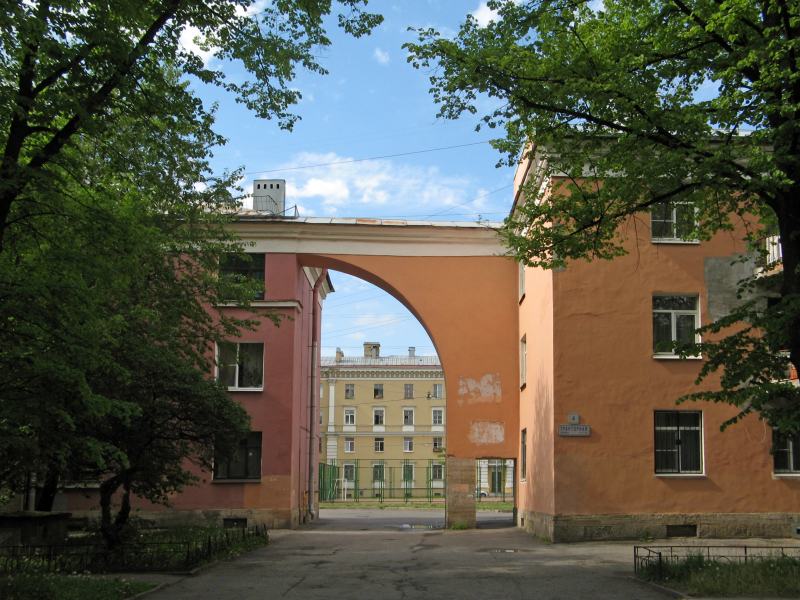
The residential area on Traktornaya Street. Credit: Ekaterina Borisova, CC BY-SA 4.0, via Wikimedia Commons
Another example of how avant-garde architecture was aimed at improving people's lives is within walking distance. The residential area on Traktornaya Street was an early experiment in providing workers with housing. These low-rise buildings feature neat arches and decorative balconies. The neighborhood is formed by a peaceful, green environment perfect for leisurely walks. Just nearby, there's a hammer-and-sickle-shaped school with its own observatory.
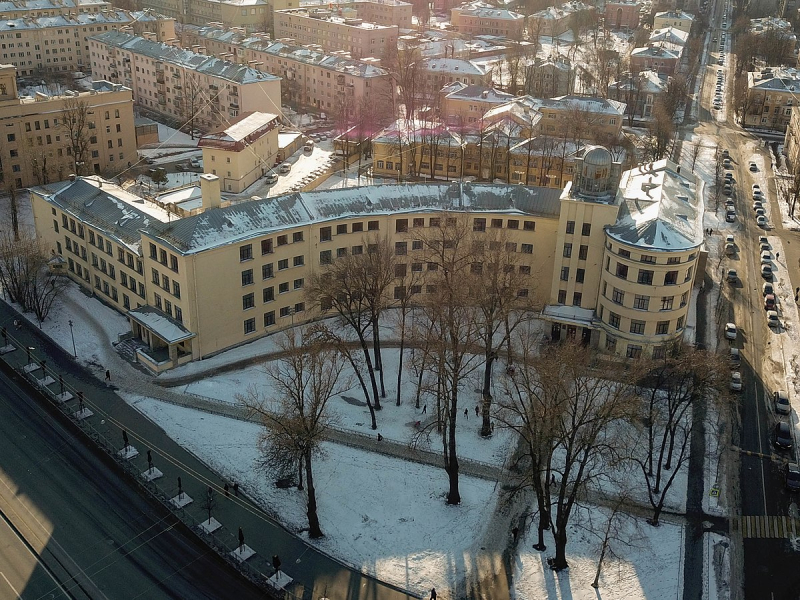
School of 10 Years of October. Credit: Nikolay Bulykin, CC BY-SA 4.0, via Wikimedia Commons
Green oasis
The tradition of green landscapes on Traktornaya Street was continued after World War II with the development of another residential area in the district. This one being of a more classical style, it has preserved a serenity you can enjoy even nowadays.
Exploring the district doesn't just mean walking around buildings; luckily, there are also two large parks! The first is the Garden of the 9th of January, named after a revolutionary uprising that took place in 1905. A highlight of this garden is its priceless lattice, which was once a decoration in the royal garden near the Winter Palace. To the north lies the spacious and quaint Ekateringof Park.
If you're up for another adventure, you can reach the nearby Obvodny Canal or hop on tram 16 and find your way to Kolomna.


